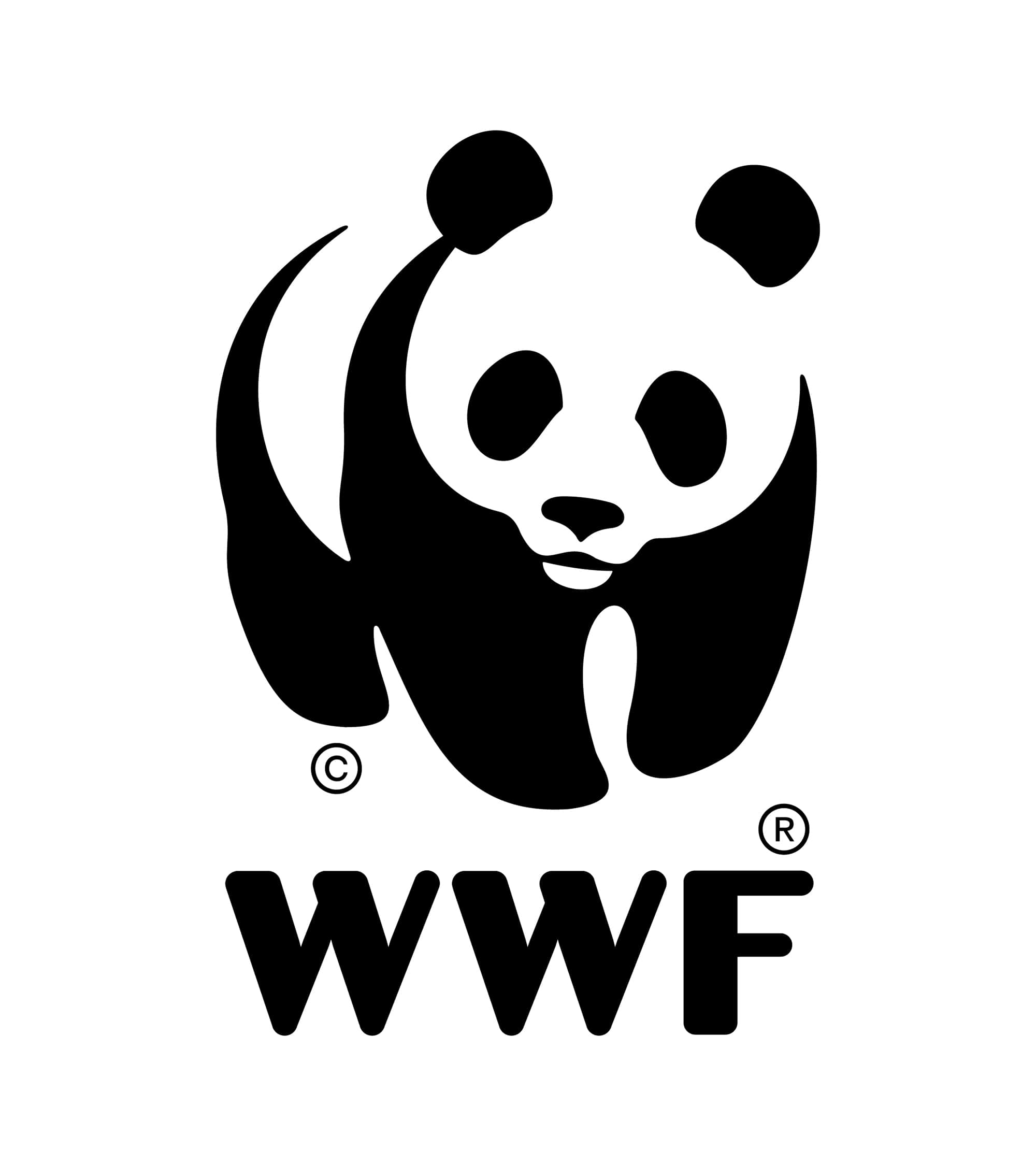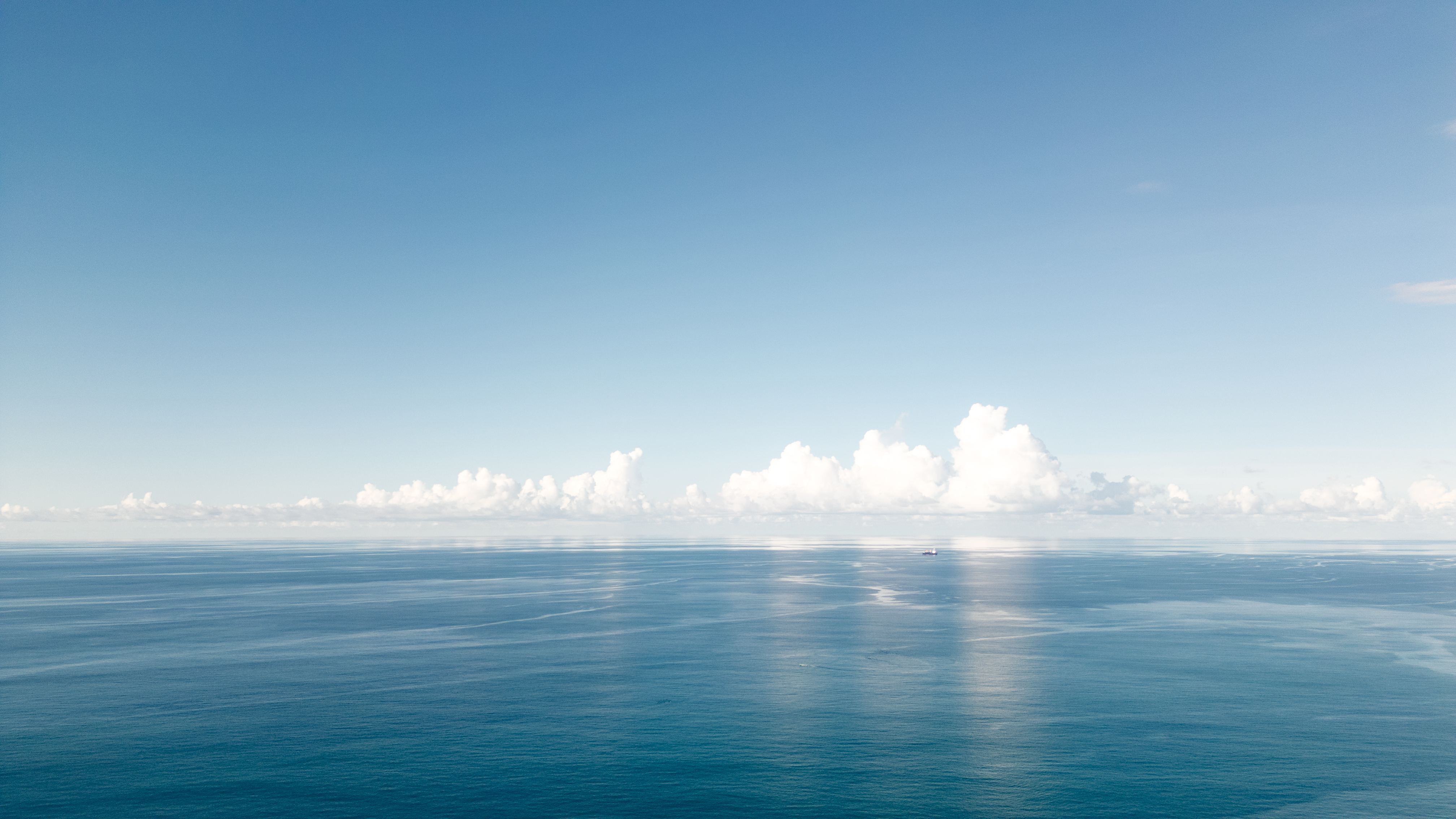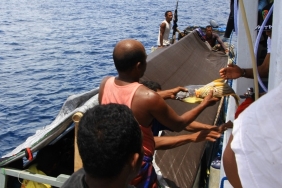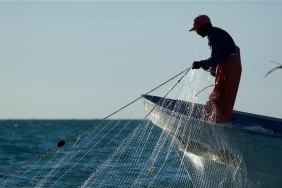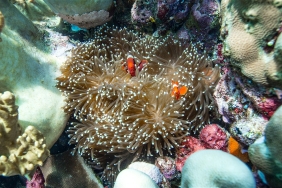KAKABAN IS GETTING DIMMER
Kakaban is one of the cluster of Derawan islands in Berau, East Borneo, which is nominated as Regional Marine Conservation Area based on the Decree of Berau Regent No. 70 of 2004. Kakaban is one of the World Heritage. For those who like nautical tourism, this area of 774.2 hectares has the most population and diversity of jellyfish in the world, namely four unique species of stingless jellyfish. Yes, that is what unique about the lake in Kakaban, full of stingless jellyfish. The other location in the world which has the resemblance is located in Palau, a country that is geographically a part of the islands of Micronesia in the southwestern edge of the Pacific Ocean.
A small pier to berth at Kakaban. © WWF-Indonesia / Rusli ANDAR
When you land on a small pier at the foot of Kakaban cliff, there are wooden stairs uphill then downhill about 300 meters away that leads you to the edge of the lake behind the hill. The stairs are made of ironwood, and on both sides of the stairs are grove of mangrove trees (Rhizophora sp) that interspersed with other tropical trees, towering and formed mangrove forests, among others are tanjang (Bruguiera sp), apiapi (Avicennia sp), and pidada (Sonneratia sp).
As an atoll having brackish water lagoon in it, Kakaban is quite unique since aside from being one of the two unique locations in the world that has a lake with stingless jellyfish, Kakaban apparently resembles the number ""9"", which circular section on the north is an atoll or reef shaped like a ring. A lagoon that the locals called Lake Kakaban is formed inside.
Lake Kakaban contains brackish water inhabited by various marine biotas that have undergone evolution as they isolated in it, which turned their character and physical appearance different from the similar species in the ocean. One of them is the jellyfish which has a clear body resembling a glass plate (Aurelia aurita) and several other species that appear much smaller like the size of a tip of an index finger (Tripedalia cystophora). Those with the size of a fist, which appear like incandescent bulbs in brownish blue color (Mastigias papua) are more dominant in numbers among others. Together with the three types of jellyfish, there are also a species of jellyfish namely Cassiopeia ornata which is a trade mark of Kakaban. What distinguishes this endemic species with other jellyfish in the ocean is the loss of ability to sting, while the unique habit of Cassiopeia is swimming upside down, by exposing the ""legs"" or tentacles up.
Mastigias papua species. © WWF-Indonesia / Rusli ANDAR
There are eight species of fish in Lake Kakaban, four of them are serinding (Apogon lateralis), puntang (Exyrias Puntang), coral anchovies (Antherinomorus endrachtensis) and julung-julung fish (Zenarchopterus dispar). At the root of Rhizophora that sunk on the banks of Lake Kakaban was found abundantly alga Halimeda and Caulepa, which resemble small green grapes. Kakaban can be regarded as the last bastion where marine life in the area is protected from the invasion of increasing human population.
The outer side of Kakaban Island is a high and steep cliff that goes straight into the ocean, with its gorgeous coral reefs, caves and alleys, which is a paradise for divers. Anyone who explore Lake Kakaban with diving/snorkel equipment or watch the underwater video documentation will understand why Kakaban should be a source of national and even international pride. Diving world has spotted some diving points around Kakaban namely: Barracuda Point, The Drift, Cabbage Patch, The Wall, Blue Light Cave, The Plateau, Rainbow Run, Diver's Delight and The North Face. Variety of the different types of dive sites is very interesting for beginner to experienced diver.
Wooden stairs that need intensive care. This staircase is an access to the exotic Lake Kakaban. © WWF-Indonesia / Rusli ANDAR
Difficult, dangerous terrain, and the absence of berth in Kakaban makes this dive site challenging. The divers’ record also gives a depiction that the animals exist in this lake have a more colorful light.
Unfortunately, Kakaban, which is already noted nationally and internationally from the number of tourists visiting the island just to see the beauty of Lake Kakaban with its famous four types of tiny jellyfish and recorded as the jellyfish that exist only in two locations in the world, is unlike what we imagine. The facilities and infrastructures condition in Kakaban today is starting to be neglected as trash and waste began to pile up. Wastes of irresponsible visitors and of waves drift mingle into one. The stairs have already started to loose and there is a fallen tree blocking the stairs to get to Lake Kakaban. It is very alarming considering Kakaban is one of the world heritages that should be preserved. All parties should concern for Kakaban maintenance and preservation for our future generations.
Contact:
Rusli Andar, Project Leader WWF in Berau, randar@wwf.or.id
